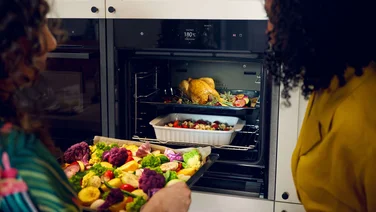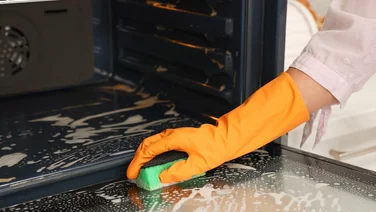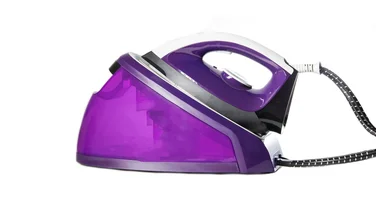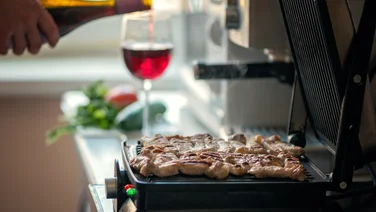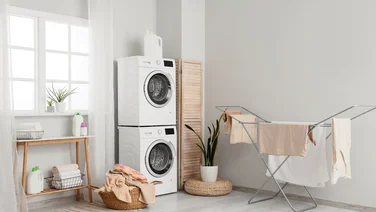To help us provide you with free impartial advice, we may earn a commission if you buy through links on our site. Learn more

Induction cooker hobs may have only been around a few years, but they’ve already revolutionised home cooking. Ask anyone who uses an induction hob and chances are they’ll tell you that their cooking experience has been totally transformed. Where many people are turning to smaller appliances like air fryers, this is an efficient and more robust alternative that’s perfectly suited to the modern kitchen.
The only trouble comes when you actually attempt to choose a specific model for your needs. Given the sheer amount of choice on the market, it’s difficult to decide which is best. Even Bosch alone has 30 different models in its lineup – and other manufacturers’ ranges are similarly daunting – so that’s why we’ve done all the research for you. Scroll down the page a short and sweet selection of top-rated models that not only perform very well but are among the most highly commended by users and reviewers alike.
If you want to speed up and, in many cases, simplify your cooking escapades, jump aboard the induction train – you won’t be disappointed.
Best induction hob: At a glance
| Best for most people | AEG MaxiSense IKE64450FB (~£659) | |
| Best portable induction hob | Tefal IH201840 Induction Hob (~£85) | |
| Best for classic style | Smeg Victoria SI964 (~£779) |
The best induction hobs you can buy
1. AEG MaxiSense IKE64450FB: The best induction hob for most people

Price when reviewed: £659 | Check price at John Lewis
One of the most unfortunate issues with induction hobs is that they require the pot or pan to be placed within the circular boundary of the chosen cooking zone. If the pot’s base is too big for a particular zone – if it overlaps too much – chances are the hob will not work and may signal the fact by making a humming noise. Since most cooking pans are circular, this usually isn’t a problem. But what if you want to use an oblong casserole cocotte while boiling water in a round saucepan?
This AEG comes with a self-sizing Multiple Bridge function that automatically detects the size of the pots or pans no matter how many you place on the hob at a time (within reason of course) – an extremely handy feature.
As with most induction hobs, the AEG looks stylish and comes with a bevelled brushed-steel surround; the whole thing is an absolute doddle to clean. Its responsive “Direktouch” slide control panel, meanwhile, is really easy to use and provides precise, instant temperature variations with a slip of a finger. And when you want to quickly boil some water, simply tap the PowerBoost button and it’ll be ready in less than 90 seconds.
If you’re in the market for a top-dollar induction hob that’s extremely practical and efficient, this is the model to opt for.
Key specs – Style: Built-in; Width: 59cm; Cooking zones: 4; Flexi zones: Yes; Output: 7.35kW
2. Tefal IH201840: The best portable induction hob

Price when reviewed: £85 | Check price at Argos
If you’re a lodger, university student, house sharer, caravaner or camper then this superb portable 13-amp model from Tefal comes highly recommended.
The Tefal is a doddle to use and comes with five preset functions – heat milk, stew, stir fry, deep fry and boil water – a timer function, and plus and minus controls to adjust temperature parameters within each preset. If you prefer to go it alone, simply select manual and choose from nine power levels (450W to 2,100W). The durable black ceramic plate is good for induction-ready pots with steel bases of up to 19cm in diameter.
For the money, it’s hard not to be seriously impressed by this product. At a shade under £50, it seems almost too cheap considering the price of induction hobs in general. Yes, it only has one cooking zone but it passed our boiling and flash frying tests with flying colours. For sheer versatility and price, this diminutive slab of cookery tech has very few peers.
Key specs – Type: Portable; Width: 28cm; Cooking zones: 1; Flexi zones: No; Output: 2.1kW
3. Smeg Victoria SI964: The best induction hob for classic style

Price when reviewed: £779 | Check price at AO
If you can’t get along with high-tech touch-sensitive controls, consider this very welcome alternative that uses good old-fashioned twisty knobs. Indeed, in the pantheon of induction hobs, this is one of the easiest models to get a handle on.
Inspired by the Italian company’s very first cooker from 1948, the Victoria matches several other retro products in the Smeg line so, if you have a country-style kitchen and already own one or two of its products, this induction newcomer is definitely worth consideration. Just be mindful that its 7.4kW power consumption may require some extra electrical work before installation.
The Victoria comes with four cooking zones and will accommodate two different pan sizes (up to 210mm and 160mm). Like the slightly cheaper Bosch, you don’t get any flexible zones here but what you do get is the usual gamut of functions such as automatic pan size detection, a control lock to prevent accidental or inappropriate use and independent boosters for ultra-quick boiling or flash frying.
As with the vast majority of induction hobs, the Smeg’s ceramic surface is only available in black. If you want to make sure your new hob matches your kitchen’s colour scheme, though, fear not, as you have the option of three different frame colours: black, stainless steel and cream.
Key specs – Type: Built-in; Width: 60cm; Cooking zones: 4; Flexi zones: No; Output: 7.4kW
How to choose the best induction hob for you
What’s so special about induction hobs?
Induction hobs are the most expensive type of hob to buy and install but they’re amazingly efficient, both in terms of speed and energy consumption – they’re up to 50% more energy efficient than either gas or electric ceramic models. With an induction hob, roughly 84% of energy from the electricity supply is put straight into the food you’re cooking. By comparison, gas loses around 60% of heat energy simply because most of the heat dissipates into thin air.For a quick gas versus induction speed test, we filled a cold, lidless Le Creuset pot with 500ml of water. The gas hob method took 4mins 17secs to bring it to the boil while even the portable Tefal induction model reviewed below took just 2mins 17secs.
And the biggest benefit for many people? Flat-topped induction hobs are also easy to clean – just wipe over with a damp cloth.
How do induction hobs work?
Instead of simply heating the entire hob area, induction hobs heat only the pot or pan itself. The process works by passing an alternating electric current through a coil of copper wire underneath the hob’s surface. This creates a magnetic field that induces an eddy current to flow through the pot sitting on the hob. The electrical resistance of the pot then creates huge amounts of excess heat and this is what rapidly heats up the pot or pan.
READ NEXT: The best rice cookers
Indeed, the process is so efficient it can often boil water quicker than a kettle and the moment you lift the pan, the process stops. Naturally, the heat of the contents alone will also make the pot or pan hot to the touch but the hob surface itself will be no hotter than a radiator at full blast so you could safely touch it without giving yourself a third-degree burn. For this reason, induction hobs are far and away the safest option if you have young kids around the house.
The general consensus among current induction hob users is that once you’ve started using one, there is no desire to go back to gas or any other cooking system. Indeed, we’ve yet to meet a single induction hob user who doesn’t swear by the system. If you’re a sceptic or traditionalist, give induction a go because chances are you’ll prefer it to gas and wonder why you never jumped ship earlier. In a nutshell, induction cooking is more environment friendly, safer, more efficient and the products themselves are far easier to keep clean.
Are there any downsides?
The most pressing issue is that the magnetic induction process only works on pots and pans made out of ferrous metals like iron and steel so you will almost certainly need to change some, if not all, of your current collection. Thankfully, there’s an easy way to see if your current cookware is compatible. Simply place a magnet on the bottom of each pot and pan and if it sticks you have the correct style; if not, you’ll need to buy a new one.
Another thing worth noting is that most induction hobs have a toughened ceramic glass coating and some have been known to crack if a heavy pot like a Le Creuset is dropped on it. Tread carefully in this respect or you might need to replace the entire unit. Some induction hobs are also quite easily scratched by sliding rough-cast iron bases across the surface although you can quite safely place a tea-towel, piece of parchment or, if you want something neater, a dedicated silicone guard between the hob and the pan to prevent this.
Most induction models use touch-sensitive control panels to select individual cooking zones and their respective temperatures. If you have a lot of trouble using touch-sensitive panels then perhaps go for a model with knobs on.
Finally, people with heart pacemakers fitted are advised to check with their doctor first as the magnetic fields created may cause problems – it pays to be careful.
Cooking zones
Most induction hobs (certainly the cheaper models) are made up of different-sized cooking zones that can be quite picky about having pots and pans placed accurately within their individual cooking boundaries. This can be a problem if you have a large, oblong casserole pot as it will most likely not fit within the optimum area. Thankfully, most modern mid-priced models get around this by having flexible zones that can be bridged to form one large cooking area. These models are worth seeking out.
However, the very latest buzzword currently doing the industry rounds is something called ‘FlexInduction’ – and it’s the new Holy Grail of cooking happiness. FlexInduction hobs are fitted with loads of sensors beneath the surface that detect the size and shape of the pot above. This means you can pretty much place pots and pans of any shape and size anywhere on the surface. Even more amazing, when you slide a pan from one area to another, the sensors remember the pan’s heat setting and ‘follow’ it as you slide it around the hob. FlexInduction hobs are currently at the highest end of the price band (up to £4,000 in some instances) but you can be sure the technology will filter down the ranks in the not too distant future.
Are there any installation tips I should know about?
Induction hobs (and indeed all electric cookers) should be on their own separate ring main and one of the correct amperage and wattage. For this reason, you’re advised to check the model’s power consumption against your electricity supply first because you may need to have your power rating increased and this can be expensive, especially if you live in an older house that requires a whole new ring main.
READ NEXT: The best kettles you can buy
You will also need to employ the services of a carpenter to build a hidden platform for the unit and perhaps some extra carpentry on your worktop surface. Most solo induction hobs are of the built-in variety but you can still go down the induction route by purchasing a range-cooker that’s fitted with an integral induction plate.


